Disclosure: Some posts contain affiliate links, which earn us a commission if you make a purchase through them. Positive Fishing © participates in various affiliate networks including the Amazon Services LLC Associates Program.
For fly anglers, finesse fishing can be a major challenge. The patience, practice, and skill needed to fish nymphs successfully on rivers and lakes are immense.
Fishing with nymphs requires many of these skills and more. Once these skills are mastered, however, the opportunities to land fish are endless. Nymph patterns are often considered the most productive flies.
No matter the time of year or time of day, nymph patterns will land fish.
In this article, I will cover:
- What is a Nymph?
- What Fish Eat Nymphs?
- When Should I Use a Nymph?
- How do I Fish with Nymphs in Moving Water?
- Section Out the Water
- Focus on the Riffles
- How To Use a Nymphing Rig?
- Euro Nymphing
- How do I Fish with Nymphs in Still Water?
- Look for Structure
- Be Patient
- Best Nymph Patterns
- Pheasant Tail
- Prince Nymph
- Zebra Midge
- San Juan Worm
What is a Nymph?
Nymph patterns are perhaps the most confusing of all the flies. Dry flies are easily identifiable as adult insects and streamers are representations of common types of prey including crayfish, minnows, and leeches. Nymphs, however, are a bit more of a challenge to identify.
A nymph is an insect that’s in the second stage of its life. After it hatches from the egg, it begins maturing. As a nymph, the insect stays near the bottom of the river or lake and feeds until it grows. Nymphs are easy targets for trout. They have no way of escaping, and if they become unattached from the river bottom they’ll float through the water and be easily picked off by a fish.
If you’re looking to locate nymphs in the water, there are a few ways you can do it. Find a rock or log in the water and turn it over. You’re more than likely going to see all sorts of insects attached to the bottom of the rock. These insects are in their nymph stage and if you can find something in your box that looks similar, you’ll land fish.
What Fish Eat Nymphs?
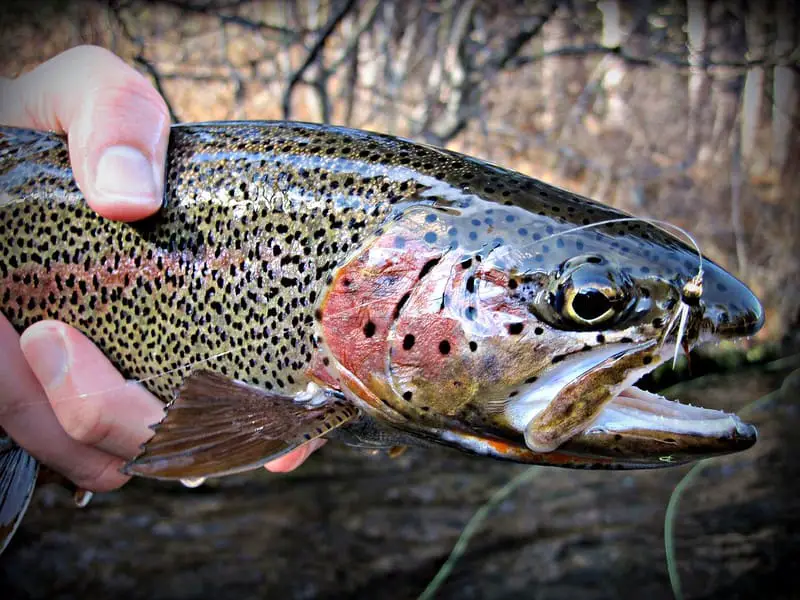
Trout are the main fish that are going to eat nymphs. Since bass, pike, and other freshwater fish feed on larger prey, there are plenty of insects left over for trout. Insects that hatch in the water are commonly found in coldwater streams, rivers, and lakes that are home to trout.
If trout are your primary target, then it’s best to familiarize yourself with nymph fly patterns.
Again, they’re the most challenging of the patterns to understand, but they’re the most effective. Panfish will also eat insects, but the primary targets are going to be your trout. Nymphing for trout is a blast and is almost always productive.
When Should I Use a Nymph?
The only time you should avoid using a nymph is when a hatch is occurring. While nymphs will still work, fishing with dry flies is too much fun! You can easily come back to nymphs once the hatch is over, but experience the hatch while it’s happening.
The beauty of nymphs is that they’ll work all year round. This isn’t the case for most fly patterns. Nymphs will work in the dead of winter when the fish are extremely sluggish and trying to preserve energy. If you float one in front of their face, they’ll eat it because it doesn’t take much effort for them at all. If it’s in the heat of the summer, nymphs will still work.
Where streamers may be too large, a nymph isn’t overwhelming. You’ll have to get them deep in the pools or undercut banks, but they’ll definitely work.
Nymphs are even great options if you aren’t quite sure what’s working. They’re not too big that they’re going to spook fish, and they look innocent enough that fish will strike them out of pure curiosity.
You can learn more about the best fly types to choose and when to use them here!
How Do I Fish with Nymphs in Moving Water?
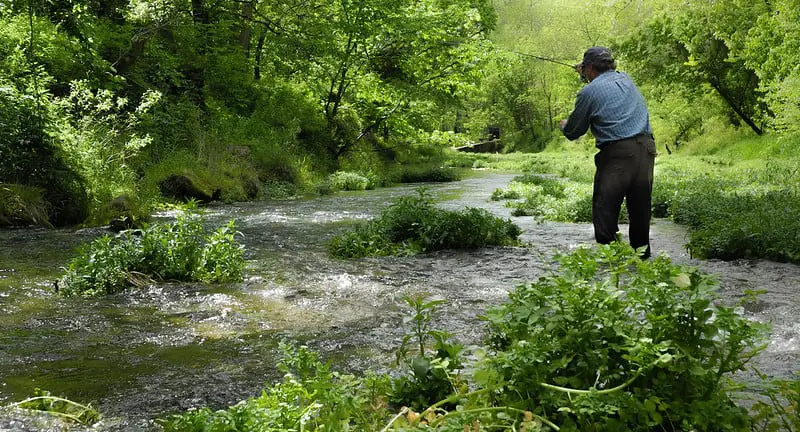
Nymphing in moving water is an art form. Being able to control the drift, the depth, and the presentation is not easy, but once you learn your water and what the fish need, you’ll constantly find fish at the end of your line.
Section Out the Water
Don’t feel as if you have to cover all of the water you want to fish in one cast. Where streamers are able to cover quite a bit of water, nymphs can’t. To accomplish a natural drift, you’re going to want to cast 15 or 20 feet upstream. Once the cast lands, you want to make sure the fly is leading the charge. If your fly line is leading, then you’ll find yourself with an unnatural drift.
The fly is going to drift across your body. As it gets closer to you, raise your fly rod and strip in any excess line. This will help the fly get lower in the water column and appear more natural.
Plus, if a fish strikes, you won’t have to strip in much slack before you’re able to set the hook. The prime drift is from 5 to 10 feet upstream from you all the way to 5 feet below stream from you. Once it’s out of this area, the drift is not going to be as natural.
Fish an area numerous times before you decide to switch to a different part of the water. Since fish are so picky with nymph patterns, it may take 5 to 10 casts in the same run before you’re able to drift exactly where you would like.
Focus on the Riffles
Pools and eddies are heavily pressured parts of moving water. As a result, the riffles and more shallow water are often left alone. Fish are more than willing to sit in riffles since the current isn’t as heavy and food is easy to find. To accomplish a quality drift in a riffle, you’re going to want as little slack in the water as possible. Let your fly and leader be the primary things in the water.
Also, make sure you aren’t standing too close to these riffles. Since the water is going to be a bit more shallow, you’ll be more easily seen by the fish. The more hidden you are, the better chance you have at landing a fish.
How To Use a Nymphing Rig?
Another option you have in moving water is to use a nymphing rig. A nymphing rig is when you have several flies tied onto your leader at once. This is a great idea when you aren’t quite sure what the fish want. Tie several different types of nymphs to your leader anywhere from six inches to two feet apart and see what the fish are willing to eat.
Euro Nymphing
My last option for using nymphs is my favorite – Euro Nymphing. You can read my in-depth article on Euro Nymphing here! Where I review the right gear, best flies, and my personal tips on this popular and relatively new style of fly fishing with nymphs.
How to Fish with Nymphs in Still Water
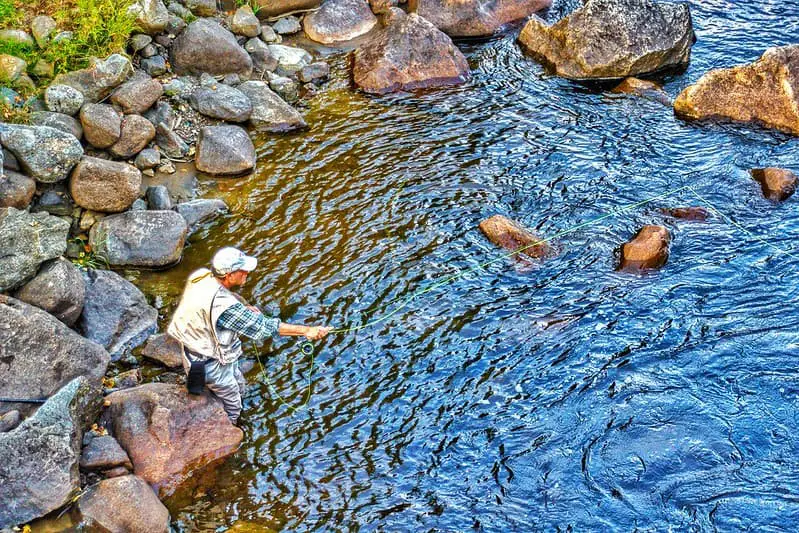
Fishing with nymphs in still water is an underrated style of fishing. Most fly anglers will use dry flies and streamers in still water, but nymphs can be equally as productive in still water as they are in moving.
Look for Structure
Nymphs aren’t large flies. They’re fairly inconspicuous and they have to be close to fish for them to notice them. As a result, you need to be knowledgeable about where the fish are hiding. If you don’t know, randomly tossing the fly into the water and expecting a fish to hit it is not a recipe for success. Look for rock piles, lay downs, and any other areas where the fish are likely to hide.
Once you identify the structure, go ahead and cast out towards it. Once your fly hits the water, be prepared for a strike. Fish like to hit nymphs as they fall. Depending on the depth of the water, you may have to wait for the fly to get to the proper part of the water column. If nothing hits your fly on the initial fall, start stripping towards yourself. You can vary how you strip to find out what the fish want.
Stay Patient
When fishing with nymphs, speed and power isn’t usually the solution to landing fish. Patience and finesse are more likely to catch a fish. For example, you may be fishing deep water with nymphs. While deepwater fishing is already challenging, it can be especially tough when you’re using nymphs. You always need to assume that you need to give the fly more time to get to where it needs to go.
Also, don’t make super fast strips towards yourself. Slow and deliberate strips with the occasional quick twitch are going to help you succeed. Growing insects aren’t always the quickest moving things. They move faster as they get older, but in the nymph stage, they’re still fairly slow and deliberate.
Best Nymph Patterns
Your nymph choices should be specific to where you’re fishing. There are dozens of patterns you can choose from, but a quick look at a hatch chart will tell you what patterns you should use. Thankfully, there are a few patterns that almost always work!
Pheasant Tail
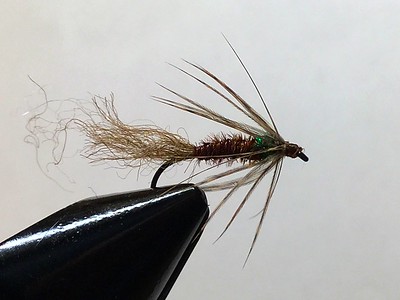
Pheasant Tail nymphs are representations of Blue Winged Olive flies. They have enough flash to entice fish but aren’t overwhelming. These are great early in the season. You can find them in sizes 16-22.
Prince Nymph
The Prince Nymph is a bit “buggier-looking” option than the Pheasant Tail. If you’re fishing in areas with Stoneflies, it’s a nice option. Otherwise, use it as an attractor. You can find it in sizes 12 to 22.
Zebra Midge
The Zebra Midge is a great mayfly representation. It’s small but mighty. You can use it in a variety of colors to accurately represent what you need. Fish them in sizes 16-22.
San Juan Worm
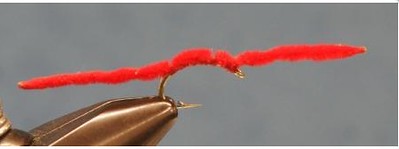
Every angler is well-aware of the productivity of worms in fishing. Worms have always caught fish and they will continue to catch fish. This simple pattern is very effective!
Final Thoughts
Fly fishing using streamers and dry flies will work on particular days. Using Nymphs is the go-to fly to catch on a more regular basis. There are many times when the fish won’t take from the surface and instead the use of a sinking water insect imitation can get results.
I hope this article has been an enjoyable read. Always switch things around and try different flies with alternative presentations, not every day is the same. What works one day may not work the next day!
You can learn more and find all the specific details about fishing fly types such as streamers and dry flies in my other articles.
- Wading Belt Essentials: Ensuring Safer Fishing - January 9, 2024
- Fishing For Catfish (Top Tips, Bait, & Gear To Catch The Big 3) - October 20, 2022
- Fishing Line Strength Vs. Diameter Chart: Why Is It Important? - October 12, 2022

